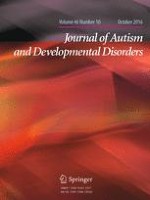27-07-2016 | Original Paper
Establishing a Scale for Assessing the Social Validity of Skill Building Interventions for Young Children with Autism Spectrum Disorder
Gepubliceerd in: Journal of Autism and Developmental Disorders | Uitgave 10/2016
Log in om toegang te krijgenAbstract
This study evaluated the psychometric properties of the Scale of Treatment Perceptions (STP), a measure of treatment acceptability targeting skill-building interventions for Autism Spectrum Disorder (ASD). This scale utilizes a strength-based approach to intervention assessment, and was established by modifying the Behavior Intervention Rating Scale (Elliott and Von Brock Treuting in J School Psychol 29(1):43–51, 1991. doi:10.1016/0022-4405(91)90014-I) and the Treatment Evaluation Inventory (Kazdin in J Appl Behav Anal 13(2):259–273, 1980. doi:10.1901/jaba.1980.13-259) to be appropriate for assessing multiple dimensions of acceptability across skill-building ASD treatments. Overall, the STP demonstrated good psychometric properties: the scale had appropriate internal consistency, demonstrated a stable three-factor structure that was invariant across samples, and discriminated among different skill-building treatments for ASD. This has important implications for dissemination, as perceived acceptability of a treatment relates to treatment utilization and adherence.
